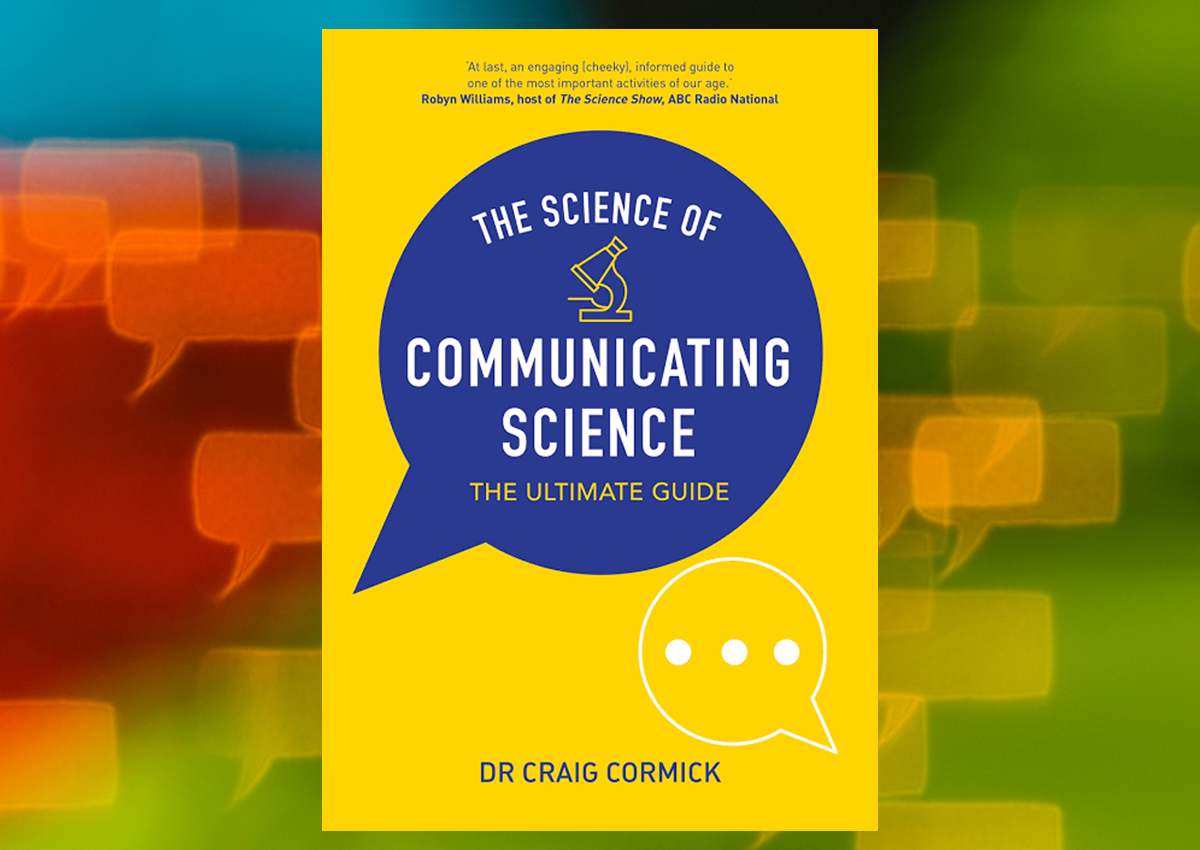
New Book on Science of Communicating Science Published
November 6, 2019| |
Dr. Craig Cormick, Australia's leading science communicator has published his new book, The Science of Communicating Science, together with Centre for Agriculture and Bioscience International (CABI) and Commonwealth Scientific and Industrial Research Organisation (CSIRO). The book aims to help solve a major problem that many scientists face at some point in their career: how do I communicate my work to society? The Science of Communicating Science is a rare book that combines academic rigor with the ease of reading a blog. It's a solid one-stop-shop where scientists can learn about the main aspects of science communication without "having to read several hundred academic papers and blogs and books." The book also helps to solve an unusual problem surrounding science communication: the disconnect between scientists and the information available on science communication.
The book has a comprehensive but digestible road map for science communications. Part 1: The ground rules lays facts and truths that are essential to understand before wading into setting up Facebook accounts or drafting press releases. It covers the importance of observing and understanding one's audience. Part 2: Communication tools is the book's main section and includes practical advice about specific communication tools. Part 3: When things get hard is one of the most interesting parts of the book, since it tackles exactly those times that scientists dread the most: what to do when things get hard. Part 4: Science communication issues is the final section of the book and includes some thought provoking issues, including ethics.
The book also contains interesting and relevant case studies, with each chapter ending with a section entitled ‘What to do with what you now know', which offers practical steps for taking action, as well as ‘Key summary points' to capture the highlights of each chapter. There are also excellent endnotes for further reading, with charts, illustrations and tables to enhance the book's messages.
For more details, read the ISAAA Blog article. To get a copy of the book, visit the CABI Bookshop.
| |
You might also like:
- Communication Challenges and Convergence in Crop Biotechnology
- Straight from the Scientists: Biotech Experts’ Perspectives and Experiences in Informing the Public
- Communicating Crop Biotechnology
Biotech Updates is a weekly newsletter of ISAAA, a not-for-profit organization. It is distributed for free to over 22,000 subscribers worldwide to inform them about the key developments in biosciences, especially in biotechnology. Your support will help us in our mission to feed the world with knowledge. You can help by donating as little as $10.
-
See more articles:
-
News from Around the World
- Golden Rice Hailed As One of PMI's Most Influential Projects of the Last 50 Years
- Pumpkin Genomes Reveal Uncommon Evolutionary History
- Scientists Double Sorghum Grain Yields by 200%
- Researchers Discover ‘KARAPPO' Gene, Reveals How Plants Reproduce through Cloning
- New Book on Science of Communicating Science Published
- EU to Face Economic Disaster if GMO is Banned, Food Safety Commissioner Says
-
Research Highlights
- Increase in Maize Yield Results from Overexpression of Single Gene
- Long-read Sequence Technology Used to Find Genes for Improvement of Watermelon Traits
-
Plant
- CRISPR-Cas9 Used to Alter Anthocyanin Production in Black Rice
- Bacterial Blight Resistant Rice Developed thru Genome Editing
-
Read the latest: - Biotech Updates (December 10, 2025)
- Gene Editing Supplement (November 26, 2025)
- Gene Drive Supplement (February 22, 2023)
-
Subscribe to BU: - Share
- Tweet

